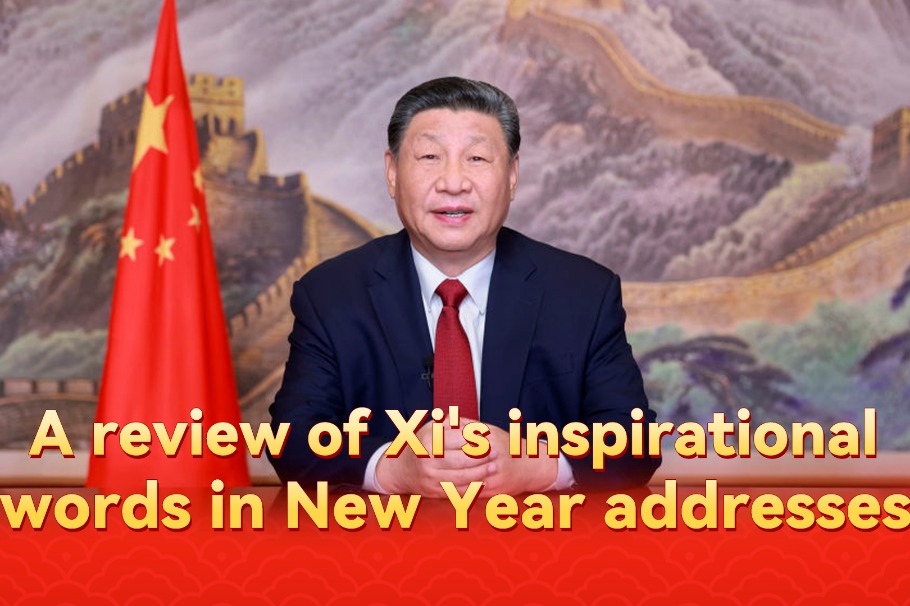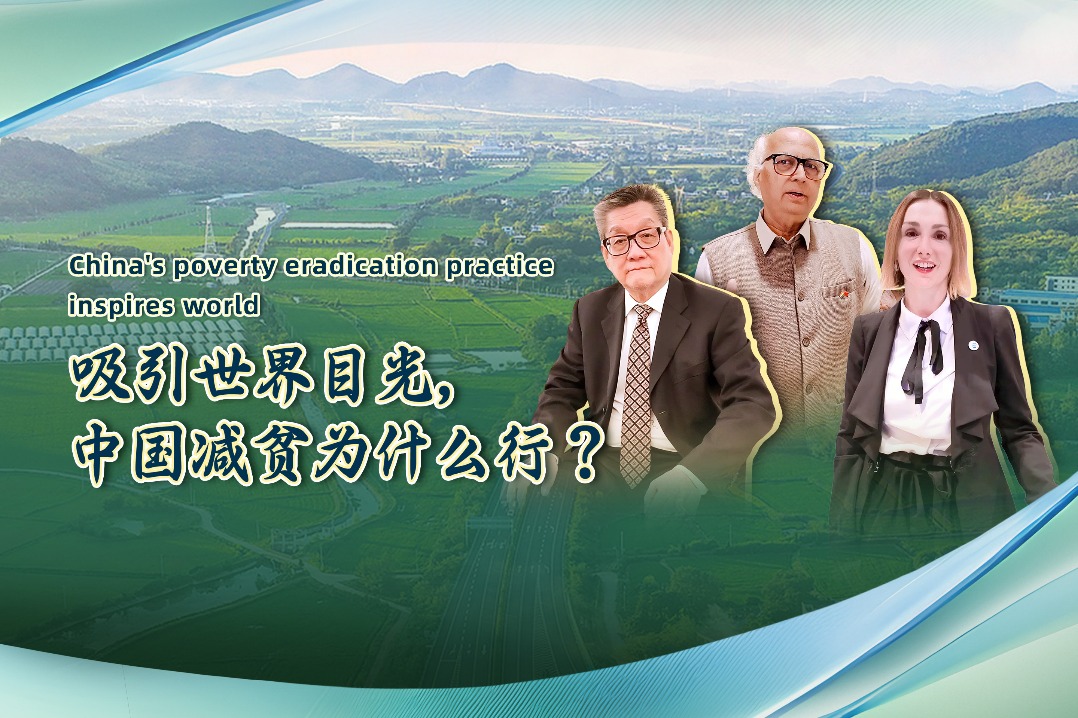BRI projects adopt green philosophy
By YANG RAN and ZHAO RUINAN | CHINA DAILY | Updated: 2022-01-15 09:41

Environmental protection a must in low-carbon energy ventures overseas
China has been making green the color of the Belt and Road Initiative.
In November, the Karot Hydropower Project, a major pilot project under the China-Pakistan Economic Corridor, successfully closed the gates of diversion tunnels and began reservoir impoundment.
The Pakistani Foreign Ministry hailed it as a "milestone", which will improve the country's access to clean, low-cost and sustainable energy.
The project, which broke ground in 2016 and contracted under China Three Gorges South Asia Investment, is expected to provide the power demands for 5 million people with an annual average generation of 3.2 billion kilowatt-hours, said Wang Minsheng, head of the project.
The construction is also environmentally friendly. When the engineers were designing the dam, they chose to build an asphalt concrete core rock-fill dam instead of a concrete gravity dam, which saved the use of 1 million cubic meters of concrete and 30,000 metric tons of steel, reducing carbon emissions of about 530,000 tons.
Once operations begin, the hydropower station will also reduce carbon dioxide emissions by 3.05 million tons per year.
This is just one of the projects under the BRI that is dedicated to eco-friendly development.
China's investment in renewable energy BRI projects has increased by nearly 40 percent from 2014 to 2020, exceeding fossil energy investments.
Liu Xiangyu, an official from China's National Development and Reform Commission, said renewable energy projects such as wind power and photovoltaic power projects now account for more than 60 percent of BRI energy projects, which has strongly supported the development of green energy and decarbonization of developing countries.
In September, China pledged that it will not build new coal-fired power projects abroad and will speed up support for other developing countries in developing green and low-carbon energy.
Such awareness of green development can also be found in China-led infrastructure projects.
The Peljesac Bridge Project in Croatia is expected to be completed by June, which can largely reduce travel time from the country's mainland to the Dubrovnik region, so as to "significantly reduce the emission of exhaust gas", said Lu Shengwei, representative of the China Road and Bridge Cooperation Croatia, one of the contractors.
"The project will help reduce traffic pollution by shortening travel time. During the tourism season, the customs often get congested with many cars for several hours. The running in-car air conditioner coupled with gas emissions would badly pollute the environment," Lu said.
Like the Karot project, environmental protection in the bridge construction was also a must.
"Under the guidance of the green construction concept, we have set the goals of saving energy, land, water and raw materials and protecting the environment," Lu said.
"For example, by recycling filling materials for construction, we have saved about 15,500 cubic meters of raw materials, which indirectly reduced carbon emissions. Also, the project team had purchased offshore oil barrier dams to prevent possible oil leakage and adopted special techniques to avoid hurting marine life in its underwater construction."
Daily life improvements
In addition to mammoth infrastructure projects, China has sought to cooperate with other countries to make daily life greener, including the fashion industry.
Sateri Group, a Singapore-invested company that has branches and factories in several Chinese provinces, has explored making a fiber from a mix of recycled pre- and post-consumer textile waste.
"The raw material we use for our regenerated fiber is textile waste and clothing. By using regenerated fibers, it's like putting on the bedsheets and quilt covers we don't use at home," said Sun Jian, vice-president of communications and sustainability of the company.
"The textile waste, after some industrial processing in the factory, can be used as raw materials in cloth making. It's a fully closed loop."
According to a 2008 report by the Bureau of International Recycling, the use of 1 kilogram of textile waste can reduce 3.6 kg of carbon dioxide emissions, save 6,000 liters of water, and reduce the use of 0.3 kg of chemical fertilizer.
























